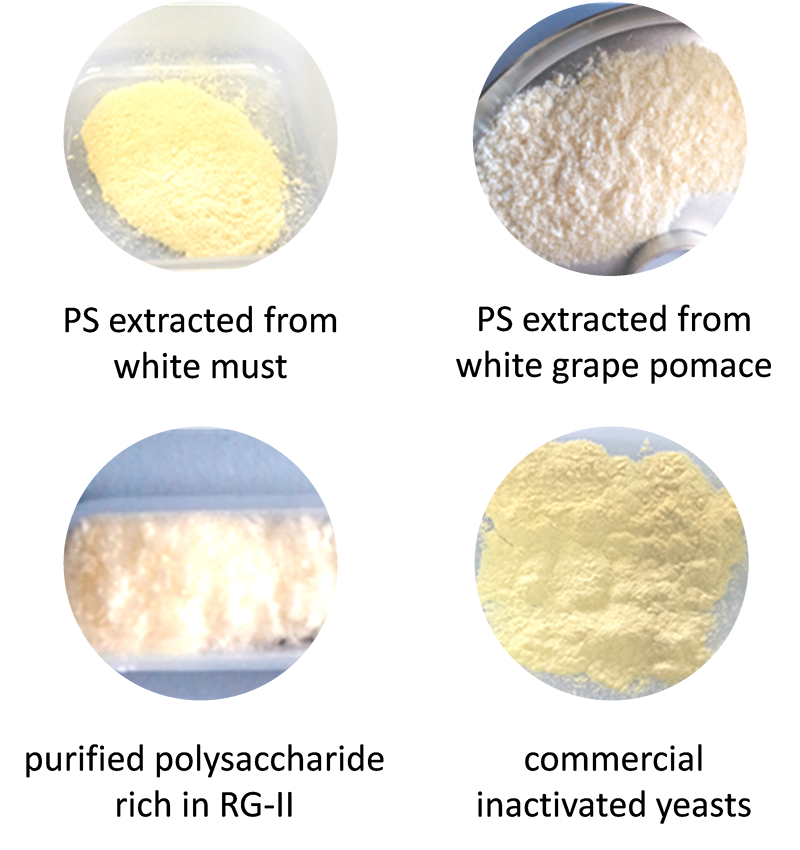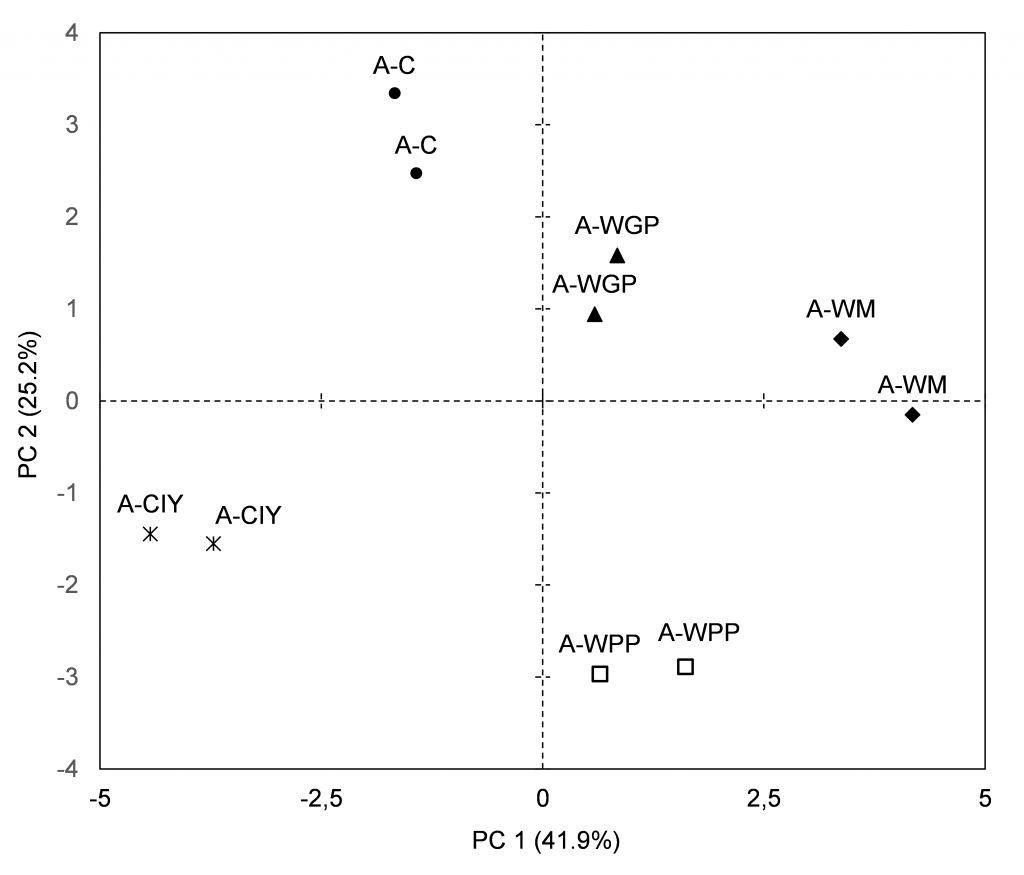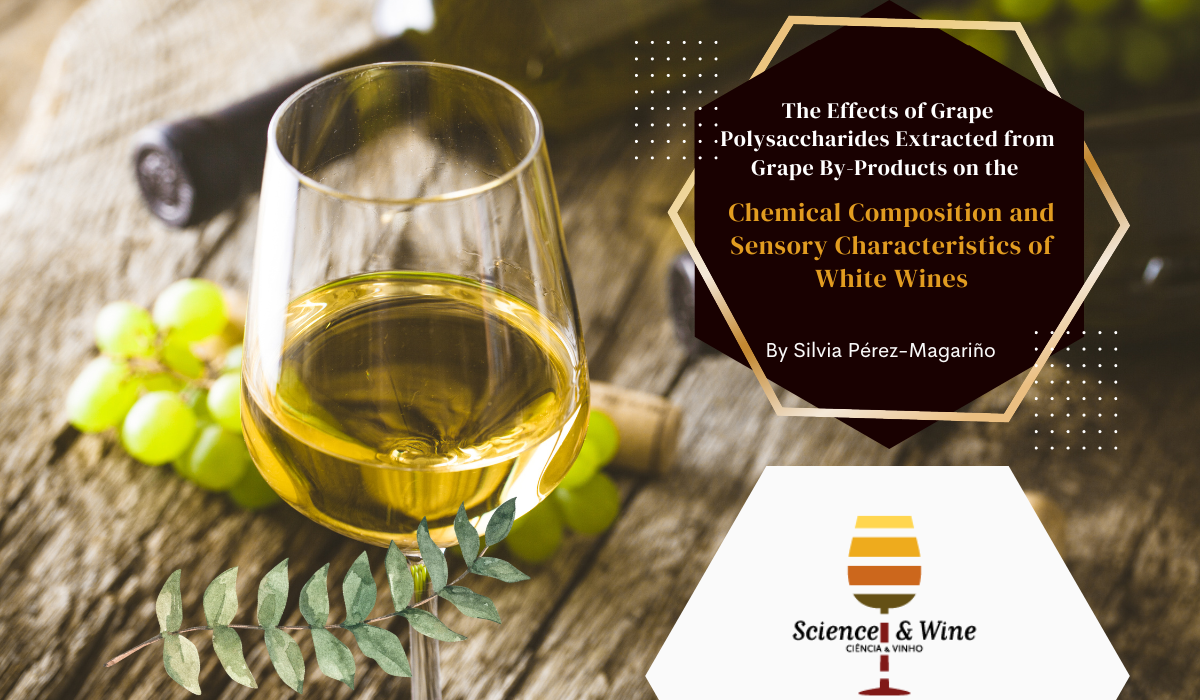By Silvia Pérez-Magariño
The wine industry produces a large number of by-products, the skins and pomace being one of the main residues that are generated, and represents an important environmental issue. There is an increasing interest in the valorization of these by-products because different bioactive compounds can be obtained from them. The most studied compounds have been polyphenols because of their antioxidant capacity, health effects, and other technological uses in the food and winery industry, as well as grape seed oils. However, grape pomace/marc can also be an important source of polysaccharides, opening the way to a new type of exploitation of these by-products since they are currently little studied.
The main polysaccharides in wines are mainly derived from the cell walls of the grape (polysaccharides rich in arabinose and galactose, rhamnogalacturonans I and II, and homogalacturonans), and from yeasts (mannoproteins and glucans). Wine polysaccharides play important roles in the technological and sensory characteristics of wines. However, not all have the same behavior, and it will depend on the size and the origin of these compounds. Currently, on the market, there are only commercial products rich in polysaccharides derived from yeasts, mainly mannoproteins, which have not always shown a clear effect in wines. Therefore, considering that much of the waste obtained in the wine sector is not used and that some recent studies have shown the great potential of other types of polysaccharides and oligosaccharides from grapes, the aim of this work was to extract polysaccharides from grape pomace and musts and incorporate them into wines to improve their quality and valorize these residues.
Two white wines were elaborated and treated with four different polysaccharides extracts obtained from white grape pomace, white must, a wine purified extract rich in rhamnogalacturonans II (RG-II), and commercial inactivated yeasts (Figure 1). The effects of the addition of these extracts on the sensory and chemical composition of white wines were studied and compared with the use of commercial inactivated yeasts.

Figure 1. Polysaccharide (PS) extracts used.
Figure 2 represents the multivariate analysis of the chemical composition of the Albillo wines. The A-C wines are located in the upper left part of the plane, the A-CIY wines in the lower left part, and the others in the right part of the plane. The A-WPP and A-CIY wines presented the greatest distances from the A-C wines, followed by the A-WM wines.
Considering the variables associated with these principal components, the A-CIY wines presented higher color intensity and lower total tannins and flavanols than the control wines. On the other hand, A-WGP and A-WM were characterized by high total tannins, hydroxycinnamic acids, ethyl esters of straight-chain fatty acids, terpenes, alcohol acetates, and polysaccharide contents, while the A-WPP wines, by high alcohol acetates and ethyl esters of straight-chain fatty acids and low hydroxybenzoic acids, hydroxycinnamic acids, and vanillin derivates.

Figure 2. Distribution of the Albillo wines by principal component analysis. C: control wines, WM: wines with the addition of polysaccharides extracted from white must, WGP: wines with the addition of polysaccharides extracted from white grape pomace, WPP: wines with the addition of wine purified polysaccharide rich in RG-II, CIY: wines with the addition of commercial inactivated yeasts.
Figure 3 provides a Generalized Procrustes Analysis (GPA) consensus configuration for the Albillo wines as determined in terms of their olfactory and gustative attributes. The olfactory GPA space defined by the two first factors accounted for 70.6% of the total variance (Figure 3a), and the treated wines were clearly different from the control wines. The A-C wines were characterized by yeasty, floral, and herbaceous notes, while the A-WM and A-WGP wines presented high tropical and stone fruity notes, and the A-CIY and A-WPP wines stood out for their great notes of white fruit and lees. Figure 3b shows the GPA average space obtained from the gustative attributes, which explained 64.8% of the total variance. The A-C wines were characterized by higher acidity and lower persistence and balance than the treated wines. The A-WGP and A-CIY wines showed higher correlations with persistence than the other wines, while the A-WM wines were more correlated with body and the A-WPP samples with high sweetness and low bitterness.

Figure 3. GPA of the mean ratings for (a) olfactory phase and (b) gustative phase in the Albillo wines. C: control wines, WM: wines with the addition of polysaccharides extracted from white must, WGP: wines with the addition of polysaccharides extracted from white grape pomace, WPP: wines with the addition of wine purified polysaccharide rich in RG-II, CIY: wines with the addition of commercial inactivated yeasts.
This is the first study showing the effects of grape polysaccharides on the chemical composition and sensory characteristics of white wines. In general, the use of grape polysaccharides extracted from grape pomace or must improved some wine characteristics, such as polysaccharide and volatile composition, increasing their concentrations. Grape polysaccharide extracts from grape pomace and must can also be useful to modulate some taste attributes such as an excess of acidity and bitterness and increase the body and persistence of wine products to a similar or greater degree than commercial yeast-derived products (rich in mannoproteins). In addition, they can prevent the loss of volatile compounds associated with fruity and floral notes over time, which will have a significant sensory impact on olfactive attributes.
Considering the obtained results, the grape pomace and surplus of musts can be considered valuable sources to obtain polysaccharide-rich products to be used as winemaking additives, opening a new opportunity to take advantage of by-products from the wine industry.
Read more: Pérez-Magariño, S.; Cano-Mozo, E.; Bueno-Herrera, M.; Canalejo, D.; Doco, T.; Ayestarán, B.; Guadalupe, Z. The Effects of Grape Polysaccharides Extracted from Grape By-Products on the Chemical Composition and Sensory Characteristics of White Wines. Molecules 2022, 27, 4815, https://doi.org/10.3390/molecules27154815

PERSONAL INFORMATION
| First name | Silvia | ||
| Family name | Pérez-Magariño | ||
| permagsi@itacyl.es | |||
| Open Researcher and Contributor ID (ORCID) | 0000-0002-0880-7154 | ||
CV SUMMARY
I am a doctor in Food Science and Technology and currently, I am a senior researcher at the Agrarian Technological Institute of Castilla y León (ITACyL, Valladolid, Spain) since 2003. I have developed my entire research career in the field of Oenology, Analytical and Sensory Chemistry of Grapes and Wine.
The main lines of research are: 1) study of the winemaking potential and characterization of different grape varieties and varietal wines, including minority varieties recovered from Castilla y León; 2) extraction of grape polysaccharides to improve wine quality; 3) study of the effect of different oenological practices/techniques on the quality of the final wines (e.g. enzymes, yeasts, lactic bacteria, mannoproteins, micro-oxygenation, dealcoholization); 4) ageing of red wines in wooden barrels and other alternative systems; 5) the winemaking potential of white and red varieties for the production of natural white, rosé and red sparkling wines; 6) strategies to prevent the formation of biogenic amines in wines; 7) evaluation of wine quality obtained by different viticultural techniques and the use of precision viticulture.
The results of these investigations have been reflected in 73 articles in international journals (66 in journals in SCI ranking), 35 articles in national journals, and 2 books. In addition, more than 180 communications have been presented to congresses.
I have participated in 27 research projects, being the coordinator and principal researcher of 8 of them; and in 24 agreements and contracts with companies, being the principal researcher of 15 of them.

